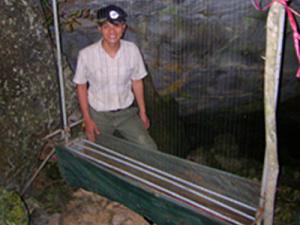Neil Furey
This project arises from the recent recognition that cave communities within the NH/BB karst complex are seriously threatened by disturbance and inappropriate management and urgently require conservation measures. It aims to respond by establishing a programme for conservation of cave fauna and bat communities within the complex.

Vietnamese limestone karst ecosystems have major significance for biodiversity conservation as they are characterised by high concentrations of locally endemic flora and fauna. Within these ecosystems, caves are key sites for conservation as they provide crucial refuges for national bat populations and highly-adapted and site-endemic biota (troglobites). This value is balanced by their inherent fragility and cultural popularity however, which renders Vietnamese cave communities extremely vulnerable to disturbance and exploitation.

The Na Hang/Ba Be (NH/BB) Karst Complex in northern Vietnam is identified in the National Biodiversity Action Plan as a priority site for Vietnamese biodiversity conservation. The complex comprises a mosaic of karst protected areas, overlain by primary forests and agricultural areas, interspersed by extensive cave systems and numerous settlements. The complex supports roughly half of the Vietnamese bat fauna, including numerous red-listed and rarely-recorded species.
This project arises from the recent recognition that cave communities within the NH/BB karst complex are seriously threatened by disturbance and inappropriate management and urgently require conservation measures. It aims to respond by establishing a programme for conservation of cave fauna and bat communities within the complex.
Specifically, the project will:
i) Conduct cave surveys to identify a representative network of key sites for cave fauna and develop management plans for their conservation;
ii) Implement an awareness campaign to generate community understanding and support for conservation of local caves and their bat populations;
iii) Establish sustainable capacity for cave conservation and community education among local protected area staff;
iv) Develop guidelines for sustainable cave management and publish these in national protected area and forest management journals.